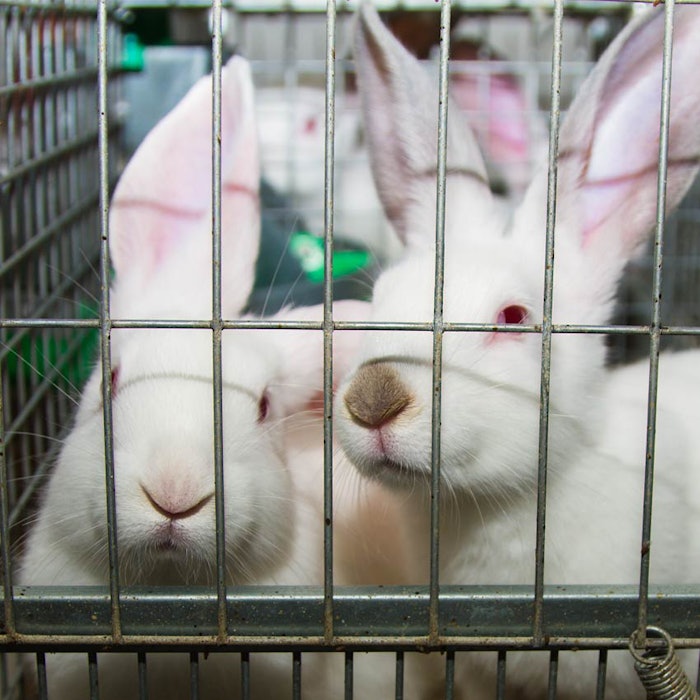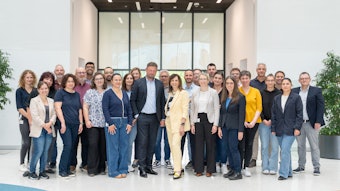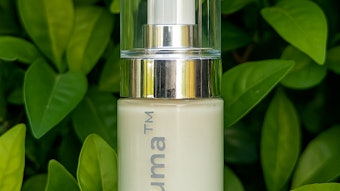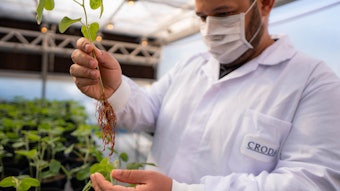
A €50 million European public–private partnership (PPP) has paved the way to a new era of assessing chemical safety without using animals. SEURAT-1, towards the Replacement of In Vivo Repeated Dose Systemic Toxicity Testing, showcases its achievements during a final symposium on December 4, 2015.
The EU's FP7 and Cosmetics Europe each contributed €25 million to the largest PPP initiative in the field. The project has successfully built on collective knowledge, taking advantage of the cross-disciplinary expertise of regulators and scientists from over 70 universities, research institutes and companies. Together they have defined a common research strategy and made a decisive step to overcome fragmentation in the research community. SEURAT-1's work not only meets the specific needs of the cosmetics industry but also contributes to a global safety assessment solution for any chemical.
“SEURAT-1 marks a significant strategic milestone in the journey towards a future of animal-free testing; it leaves a solid foundation on which future initiatives can build,” said John Chave, director general, Cosmetics Europe. “With our strategic partners, the cosmetics and personal care industry is committed to strengthening our collaboration in this area of research and to continuing our twenty year commitment towards the development of efficient, sustainable and innovative animal-free testing tools.”
The five-year project has delivered a set of tools and technologies, as well as a framework to tie them together. SEURAT-1 teams have together tested the framework with three case studies.
Replacing traditional animal experiments with predictive toxicology requires a deep and detailed understanding of how chemicals cause adverse effects in humans. SEURAT-1's framework assembles evidence based on mechanisms called adverse outcome pathways (AOPs), which detail the biological steps leading to an adverse health effect, beginning with a molecular initiating event.
Since many chemicals affect the liver, SEURAT-1 scientists have made a concerted effort to understand and monitor different toxicity mechanisms. For example, they have unearthed AOPs for three key liver toxicity mechanisms: fibrosis, steatosis and cholestasis.
SEURAT-1's HeMiBio project has built a miniature device to mimic a human liver using different types of liver cells. The “liver-on-a-chip” uses biosensors to monitor what happens to cells when a chemical passes through. The device can function for over a month and has already been used to increase understanding of toxicity mechanisms for well-known pharmaceuticals.
Meanwhile, a SEURAT-1 project called NOTOX has developed a 3D liver model for chronic repeated exposure toxicity studies. By combining data on genes, proteins and metabolites, NOTOX scientists have created computer (in silico) models to predict adverse effects in humans.
SEURAT-1 project Detective has identified a set of biomarkers for liver toxicity to help hunt out chemicals likely to cause liver toxicity. Human liver tissue for testing is in short supply, with most healthy organs destined for transplant. So, for the first time, a cell factory project called SCR&Tox has provided human induced pluripotent stem cells by reprogramming mature cells to become immature and then to form fresh liver cells.
All of SEURAT-1's toxicity data and test protocols are stored in a web-based warehouse called ToxBank, which also houses data from the EU's Joint Research Centre and US chemical screening programs ToxCast and Tox21. “The current approach to data science lags far behind the practices we need to follow in research programs and labs, so that we can transfer research to industrial practice. Within the framework of ToxBank and our interactions with many labs across Europe, we believe we have made significant progress in this area, so that methods and data have been captured according to best practices, and will be sustained,” said ToxBank coordinator Barry Hardy from consultancy Douglas Connect.
An open-source database, set up by an in silico toxicology project called COSMOS, also contains data on cosmetics ingredients from many historical toxicology studies. COSMOS has used the database to build computer models to help understand how a chemical is likely to interact with an organism, allowing predictions based solely on chemical structure. The resulting models are freely available.
Regulatory bodies are increasingly turning to alternative safety testing methods. For example, next April, the European Chemicals Agency (ECHA) will run a topical scientific workshop on new approach methodologies in regulatory science, partly based on SEURAT-1's approach.
The EU's next major alternatives project, called EUToxRisk, will build on SEURAT-1's findings. “The SEURAT-1 project has provided important groundbreaking work to establish a validated toolbox for alternative methods,” said EUToxRisk coordinator Bob van de Water from Leiden University in The Netherlands. “A large proportion will be incorporated within the new EU-ToxRisk project. In addition, the case study concept that was developed within SEURAT-1 will be a central component within EU-ToxRisk,” he added. The Horizon 2020-funded project will develop case studies to test a range of tools and methods that make use of non-animal approaches.
Cosmetics Europe will continue the research efforts, both through its partnership with the EUToxRisk project and through its Long Range Science Strategy program (2016-2020), which will also use SEURAT-1 knowledge and will play a crucial role in maintaining EU leadership in this area of research. With this program, the industry aims to develop further alternative test methods and approaches for safety assessment as well as to facilitate their regulatory acceptance.










